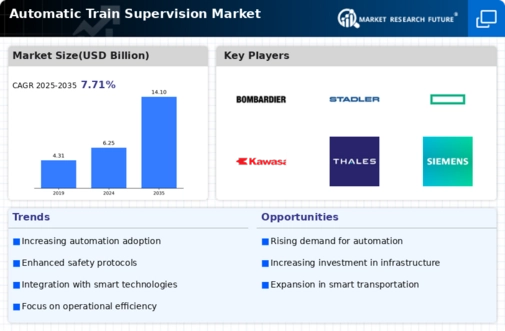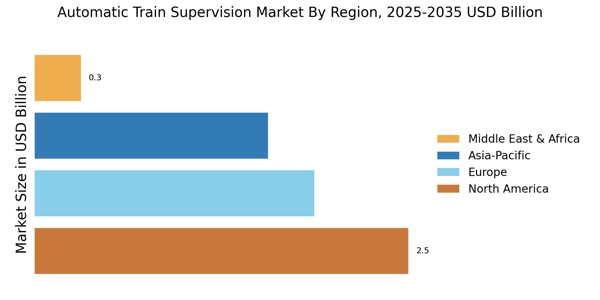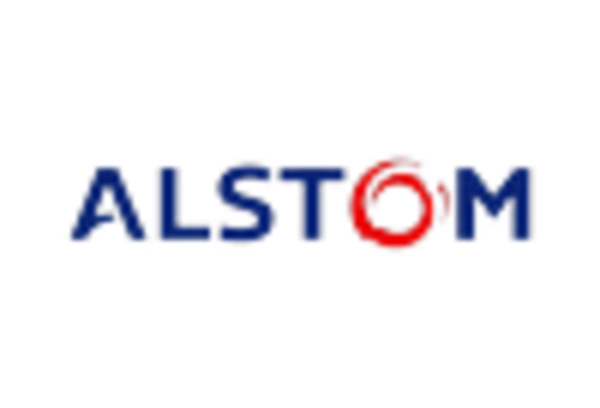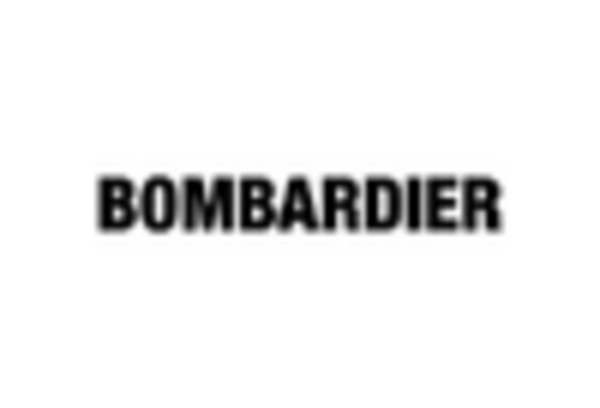The Automatic Train Supervision Market is witnessing a dynamic shift as technological advancements and the increasing demand for efficient and safe transportation systems reshape the competitive landscape. This market encompasses various systems and solutions that facilitate the monitoring, control, and management of train operations to enhance service quality and operational efficiency.
Competitive insights reveal that players in this market are investing in research and development to innovate and integrate next-generation technologies, such as artificial intelligence and the Internet of Things, into their systems.
With the growing emphasis on smart city initiatives and sustainable transportation, companies are also exploring partnerships and collaborations to expand their market presence and leverage complementary strengths, ultimately aiming to meet the evolving needs of urban mobility.
Bombardier, known for its commitment to innovation in the transportation sector, plays a notable role in the Automatic Train Supervision Market. The company's strengths lie in its extensive experience in rail solutions, which has enabled it to develop robust automatic train supervision systems that prioritize safety and efficiency.
Bombardier's proficiency in integrating advanced technologies into its solutions, coupled with a reputation for high-quality products, enhances its competitive edge. The company benefits from a strong global presence and established relationships with numerous railway operators, allowing it to effectively address various market demands.
Additionally, Bombardier's focus on sustainability aligns with current trends in the industry, positioning it favorably within the market landscape as cities seek eco-friendly transportation options.
Stadler Rail is another key player making significant strides in the Automatic Train Supervision Market. The company is recognized for its versatile range of rail solutions, including automated systems designed to enhance operational performance.
Stadler Rail's strengths include a strong emphasis on customization, which allows it to tailor its automatic train supervision solutions to meet the specific requirements of different rail networks.
The company's commitment to innovation and high-quality engineering has earned it a solid reputation among railway operators worldwide. Furthermore, Stadler Rail's ongoing investments in research and development ensure that it remains at the forefront of new technologies, allowing it to effectively compete in a rapidly evolving market.
This strategic focus positions Stadler Rail as a formidable competitor in achieving operational excellence and superior passenger experiences within the automatic train supervision segment.


















Leave a Comment